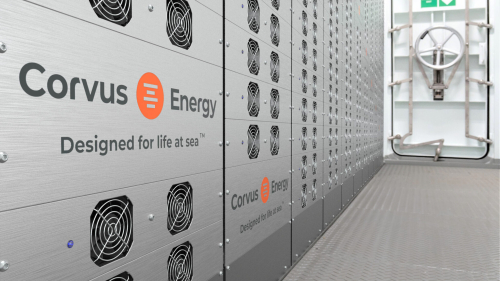With more than 40 MWh of energy storage, it will be the largest battery system installed onboard a ship—four times as big as the current largest installation.
Incat shipyard in Tasmania will build the aluminum-constructed vessel on behalf of its South American customer, Buquebus. The large ferry, 130m in overall length, will have the capacity for 2,100 passengers and crew, 225 cars, and a 2,000 square meter Duty-Free Shop, all housed on one level.
This vessel will be the largest of its type with the highest ESS capacity and it will also have the longest zero-emission journey, at the highest speed, and it will be charged with the world’s highest capacity chargers.
This project is made possible by Corvus’ lightweight battery, the Dolphin NextGen. The design is based on the architecture of the 4-year, multi-million development program for the Corvus Blue Whale ESS. The Blue Whale development included a ground-up redesign that re-evaluated and improved every aspect of battery design, including battery chemistry, mechanical and electrical design, and software building blocks.
The Dolphin NextGen ESS is a game changer for marine battery projects due to its low weight and volumetric density, robustness, and unsurpassed flexibility.
The battery systems are scheduled for delivery end of 2024 and the vessel will enter operation in 2025.
Corvus Energy also develops maritime hydrogen fuel cells in collaboration with Toyota.
